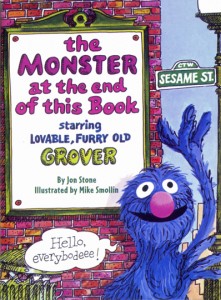“What is the very first bedtime story you can remember?”
I often ask this question of my fellow authors. Last weekend at WisCon I asked it several times, and this is what people told me:
Christopher Barzak remembers many rabbits; listening to Peter Rabbit, requesting The Velveteen Rabbit, and then reading Watership Down on his own. If rabbits are his totem, then I suspect that the moon rabbits of Japanese folklore watch over him–or maybe the Aztec rabbit gods, who were known to be extremely fun at parties.
Ted Chiang suspects that Hop on Pop was among the very first books read to him. Oh, the Thinks You Can Think! must have also played a significant role. “Think and wonder, wonder and think!”
Eugene Fischer also remembers Dr. Seuss, along with The Hobbit and a Heinlein short story involving an antique plate. Neither of us could remember the name of that story, but I’m pretty sure it’s somewhere in The Past Through Tomorrow.
Jen Volant has food-themed memories of bedtime books. We were at a restaurant when she brought up The Very Hungry Caterpillar and Cloudy with a Chance of Meatballs, so the setting may have had a mnemonic effect. Then we all talked about the malleability of memory.
A.A. Milne made an impression on the early years of Ellen Klages–though she preferred his poetry to his prose, and still considers those verses science-fictional. After describing the otherworldliness of Milne’s poetry, she led a room full of people in a full chorus of “Disobedience.”
“JAMES JAMES MORRISON MORRISON WEATHERBY GEORGE DUPREE…”
Her WisCon reading was a heartbreaking short story entitled “Goodnight Moons” (published here and here). Every beat in the story made all of us laugh, until we finally noticed ourselves quietly crying.
The earliest bedtime stories told to Delia Sherman involved the mischief made by escaped dolls. They were told to her in Japanese. She does not speak Japanese, and yet remembers the stories perfectly.
Sherman’s magnificent novel The Freedom Maze just won the Andre Norton Award, by the way.
Nancy Werlin was not read to as a child. She insists that her parents didn’t neglect her, but they were occupied with medical challenges posed by her older sister. Nancy taught herself to read by the time she was three.
Thus ends my WisCon 36 collection of bedtime stories.

